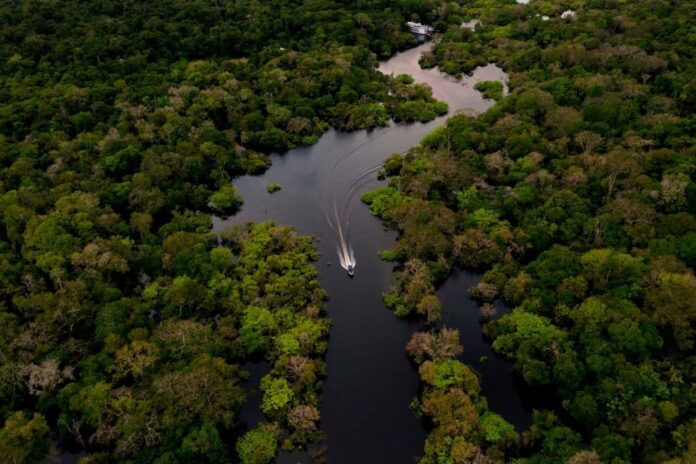MANAUS: Deep in the Amazon, an experiment unfolds that may allow a peek into the future to see what will happen to the world’s largest rainforest when carbon dioxide levels rise.
It is a simulation to see how the lungs of the world will endure global warming.
The AmazonFACE project, co-financed by Brazil and the United Kingdom, is “an open-air laboratory that will allow us to understand how the rainforest will behave in future climate change scenarios,” says Carlos Quesada, one of the project coordinators.
Quesada stands at the foot of a soaring metal tower that protrudes through the rainforest canopy at a site 50 miles (80 kilometres) north of Manaus in northwest Brazil.
Sixteen other towers arranged in a circle around it will “pump” CO2 into the ring, replicating levels that may happen with global warming.
“How will the rainforest react to the rising temperature, the reduction in water availability, in a world with more carbon in the atmosphere?” asks Quesada, a researcher at an Amazon research institute that is part of the Brazilian Ministry of Science and Technology.
‘Window to the future’
The technology known as FACE (Free Air CO2 Enrichment) has already been used to study the impact on forests in Australia, the United States and the United Kingdom, but never in a tropical rainforest.
By 2024, there will be six “carbon rings” pumping CO2 — one of the causes of global warming — at a concentration 40 percent to 50 percent higher than today.
Over a decade, researchers will analyze the processes occurring in leaves, roots, soil, water and nutrient cycles.
“We will have more accurate projections on how the Amazon rainforest can help combat climate change with its ability to absorb carbon from the atmosphere. Also, it will help us understand how the rainforest will be impacted by these changes,” says David Lapola, a researcher at the University of Campinas, who coordinates the project with Quesada.
The carbon increase in the atmosphere may lead to the creation of grassy plains, or savanna, where Amazon rainforest once flourished, with vegetation better adapted to higher temperatures and longer droughts.
But CO2 could also “fertilize” the forest and make it temporarily more resistant to these changes.
“This is a positive scenario, at least for a short time, a period for us to get to zero-emission policies, to keep temperature increases to only 1.5 degrees Centigrade,” Quesada says.
The project “is a window to the future. You open the window and look at what might be happening 30 years ahead,” he says.
The UN’s Intergovernmental Panel on Climate Change (IPCC) urged ambitious action to counter global warming again this year.
According to its latest March report, global warming will surpass 1.5 degrees Celsius in the decades after 2030, leading to irreversible loss of ecosystems.
Coinciding with global warming is the impact of human-caused deforestation in the Amazon.
A landmark 2018 study by scientists Thomas Lovejoy and Carlos Nobre found that the Amazon is hurtling toward a tipping point where savannas begin to replace rainforests.
They said that would happen with deforestation of 20 to 25 percent of Amazon territory. Currently, deforestation stands at 15 percent.
UK-Brazil cooperation
AmazonFACE, coordinated by the University of Campinas and the Brazilian Ministry of Science, has the support of the Foreign Office and the British Meteorological Service (MET office).
British Foreign Secretary James Cleverly visited the facilities this week and announced a new contribution of 2 million pounds (US$2.4 million) to the project, which since 2021 has already received 7.3 million pounds from the United Kingdom.
Brazil, for its part, has invested 32 million reais (US$6.4 million).























